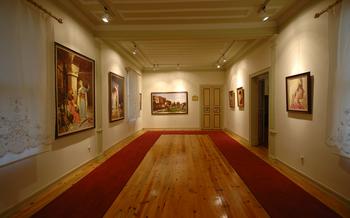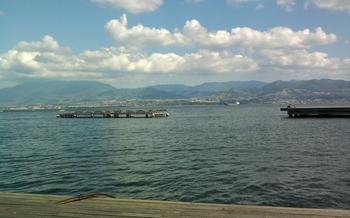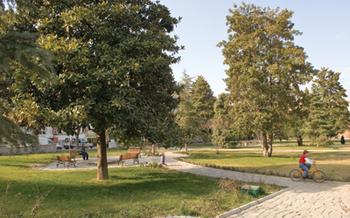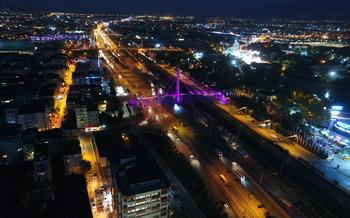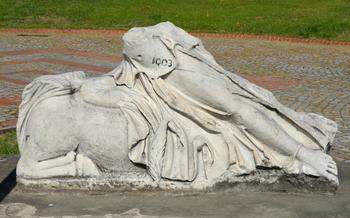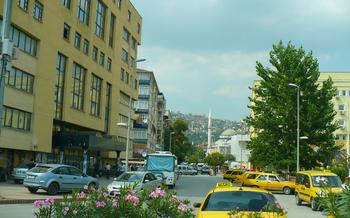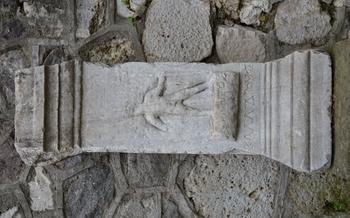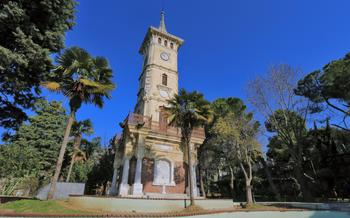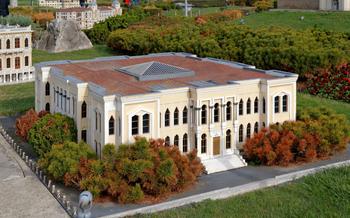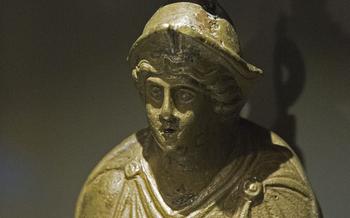
Osman Hamdi Bey Museum
- The Life of Osman Hamdi Bey
- Location and History of the Museum
- Museum's Collection
- Highlights of the Museum
- Educational Programs and Workshops
- Temporary Exhibitions
- Museum's Architecture and Design
- Accessibility and Facilities
- Hours of Operation and Admission Fees
- Visitor Tips and Etiquette
- Nearby Attractions and Points of Interest
- Local Cuisine and Dining Options
- Accommodations and Hotels
- Photography and Social Media
- Insider Tip: Uncover the Hidden Gem
The Life of Osman Hamdi Bey
Osman Hamdi Bey, a renowned Turkish painter, and archaeologist, left an indelible mark on the world of art and culture. Born in 1842 in Istanbul, he embarked on a journey that would shape the course of Turkish art history. His passion for painting blossomed at an early age, and he honed his skills under the tutelage of renowned European artists.
Driven by his deep-seated love for his homeland, Osman Hamdi Bey dedicated his life to preserving Turkey's rich cultural heritage. He served as the director of the Imperial Museum, now known as the Istanbul Archaeological Museums, where he played a pivotal role in safeguarding and showcasing Turkey's invaluable artifacts.
His artistic talent and archaeological expertise converged in his most famous painting, "The Tortoise Trainer." This masterpiece depicts a young boy engaged in the ancient art of tortoise training, a practice that symbolized patience and perseverance in Ottoman culture. The painting not only showcases Osman Hamdi Bey's exceptional artistry but also encapsulates his deep appreciation for Turkey's cultural traditions.
Location and History of the Museum
The Osman Hamdi Bey Museum is situated in the heart of İzmit, at Cumhuriyet Caddesi No: 3Visitors can easily reach the museum by taking public transportation, such as buses or taxis, or by using their own vehicles. The museum is open from 08:30 AM to 05:30 PM every day except for Mondays.
The building that houses the museum holds significant historical value as it was once the residence and studio of Osman Hamdi Bey himself. After his passing in 1910, the building was transformed into a museum in 1927 upon the request of his wife, Nazlı Hamdi Bey. The museum has undergone extensive renovations and expansions over the years to enhance the visitor experience and preserve the collection. The most recent renovation was completed in 2012, which involved the addition of new galleries and the restoration of the original architectural features of the building.
Museum's Collection
The Osman Hamdi Bey Museum is a treasure trove of ancient artifacts, Islamic art, and personal belongings that offer a glimpse into the life and work of Osman Hamdi Bey. The museum's collection includes:
-
Ancient Sculptures: Marvel at the intricate stone carvings and statues from various periods of Turkish history. These sculptures depict gods, goddesses, mythical creatures, and historical figures, offering insights into the artistic traditions and beliefs of ancient Anatolia.
-
Ceramics and Mosaics: Explore the vibrant and colorful collection of ceramics and mosaics. Admire the delicate pottery, tiles, and mosaics that adorned the homes and palaces of ancient civilizations. These artifacts showcase the mastery of Turkish artisans and their ability to transform everyday objects into works of art.
-
Islamic Art Collection: Immerse yourself in the beauty and diversity of the Islamic art collection. Carpets, manuscripts, calligraphy, and intricate metalwork adorn the museum's galleries. These objects showcase the rich cultural heritage of the Ottoman Empire and the influence of Islamic art on Turkish culture.
-
Osman Hamdi Bey's Personal Belongings: Get up close and personal with Osman Hamdi Bey's personal belongings, including his painting equipment, furniture, and clothing. These items provide a glimpse into the daily life and working habits of this renowned artist and archaeologist.
Highlights of the Museum
The Osman Hamdi Bey Museum is home to an impressive collection of artifacts and artworks that are not to be missed. Among the highlights is the iconic painting "The Tortoise Trainer" by Osman Hamdi Bey himself. This masterpiece depicts a young boy holding a tortoise in his hand, surrounded by a lush garden. The painting is renowned for its vibrant colors, intricate details, and the artist's unique blend of Eastern and Western influences.
Another must-see exhibit is the "Sarcophagus of Crying Women," a Roman-era marble sarcophagus adorned with intricate carvings of grieving women. The sarcophagus is a testament to the artistic skills of ancient craftsmen and offers a glimpse into the funerary practices of the Roman Empire.
Finally, the museum houses an impressive collection of sculptures, including the "Statue of Heracles," a colossal bronze statue depicting the mythical hero Hercules. The statue stands over two meters tall and showcases the artist's mastery of anatomy and proportion. These highlights, along with many other remarkable artifacts, make the Osman Hamdi Bey Museum a must-visit destination for art and history enthusiasts alike.
Visitors can also learn about the fascinating stories and anecdotes behind these artifacts through informative plaques and guided tours. Don't miss the opportunity to immerse yourself in the rich history and culture of Turkey at the Osman Hamdi Bey Museum.
Educational Programs and Workshops
The Osman Hamdi Bey Museum is not just a repository of artifacts; it is also a vibrant center for education and cultural engagement. The museum offers a diverse range of educational programs and workshops designed to promote the appreciation of Turkish art and culture among students, families, and art enthusiasts of all ages. These programs are carefully crafted to provide participants with hands-on experiences, interactive learning opportunities, and in-depth insights into the museum's collection.
For students, the museum offers guided tours, workshops, and educational programs that align with school curricula. These programs aim to foster a love for history, art, and archaeology among young learners. Families can enjoy engaging workshops and activities that encourage creativity, exploration, and teamwork. Children can participate in art classes, storytelling sessions, and craft workshops inspired by the museum's collection, making learning a fun and memorable experience.
The museum also caters to adults with a thirst for knowledge. Art enthusiasts can attend lectures, seminars, and workshops led by experts in the fields of art, archaeology, and history. These programs provide participants with a deeper understanding of Turkish art and culture, as well as the opportunity to engage in discussions and debates with like-minded individuals.
Additionally, the museum organizes special events, exhibitions, and workshops throughout the year. These events often feature guest speakers, artists, and performers who share their knowledge and expertise with the public. Visitors can participate in workshops on traditional Turkish crafts, learn about the latest archaeological discoveries, or simply enjoy an evening of music and art inspired by the museum's collection.
To inquire about or register for educational programs and workshops, visitors can contact the museum's education department or check the museum's website for more information. The museum's friendly and knowledgeable staff is always ready to assist visitors and provide guidance on choosing the most suitable programs for their interests and needs.
Temporary Exhibitions
The Osman Hamdi Bey Museum is not just a repository of historical artifacts but also a vibrant platform for contemporary art and cultural exchange. Temporary exhibitions are a key part of the museum's mission to promote Turkish art and culture. These exhibitions showcase the works of established and emerging artists, providing a fresh perspective on Turkish art and its diverse expressions.
Past exhibitions have explored a wide range of themes and mediums, from traditional painting and sculpture to photography, installation art, and digital media. The museum has hosted solo exhibitions of renowned Turkish artists such as Fikret Mualla, Burhan Doğançay, and Fahrelnissa Zeid, as well as group exhibitions that brought together artists from different generations and backgrounds.
Temporary exhibitions at the Osman Hamdi Bey Museum offer visitors an opportunity to engage with contemporary Turkish art and explore new artistic perspectives. They also contribute to the museum's mission of fostering dialogue and understanding between different cultures. Visitors are encouraged to check the museum's website or social media for updates on upcoming exhibitions and to make sure to include these vibrant displays in their visit to the museum.
Museum's Architecture and Design
The Osman Hamdi Bey Museum is housed in a magnificent building that is as much a work of art as the exhibits it contains. Originally built in 1895 as Osman Hamdi Bey's residence and studio, the building seamlessly blends traditional Ottoman and European architectural styles. Its striking exterior features intricate stone carvings, elegant arches, and a grand entrance that hints at the treasures within.
Stepping inside, visitors are greeted by a spacious and inviting foyer with soaring ceilings and a grand staircase that leads to the museum's upper floors. The interior design is a testament to Osman Hamdi Bey's exquisite taste and attention to detail. The walls are adorned with vibrant frescoes and decorative tiles, while the floors feature intricate mosaic patterns that transport visitors back in time.
Natural light floods the museum through large windows, illuminating the exhibits and creating a warm and welcoming atmosphere. The museum's thoughtful design ensures that visitors can easily navigate the collection, with clear signage and well-organized galleries.
One of the highlights of the museum's architecture is the beautiful courtyard, which serves as an oasis of tranquility amidst the bustling city. Surrounded by lush greenery and adorned with a fountain, the courtyard offers visitors a place to rest and reflect on the wonders they have seen.
The Osman Hamdi Bey Museum's architecture and design are not merely a backdrop for the exhibits; they are an integral part of the museum experience, creating an immersive environment that transports visitors to a bygone era and allows them to appreciate the beauty and richness of Turkish art and culture.
Accessibility and Facilities
The Osman Hamdi Bey Museum is committed to providing an accessible and enjoyable experience for all visitors. The museum is fully wheelchair accessible, with ramps and elevators connecting all levels of the building. Wheelchair-accessible restrooms are also available for the convenience of visitors.
For those who prefer a guided tour, the museum offers guided tours in Turkish and English. Alternatively, visitors can rent audio guides to explore the exhibits at their own pace. The audio guides are available in multiple languages, ensuring that visitors from all over the world can learn about the museum's collection.
To enhance the visitor experience further, the museum provides a range of amenities, including a gift shop, café, and library. The gift shop offers a variety of souvenirs and unique items inspired by the museum's collection. The café provides a relaxing space for visitors to enjoy a cup of coffee or a light snack while taking in the museum's tranquil atmosphere. The library houses a collection of books, journals, and documents related to Turkish art and archaeology, available for research and reference.
To ensure a smooth and convenient visit, the museum offers ample parking options in the vicinity. Visitors can also easily reach the museum via public transportation, as it is well-connected by bus and train routes. Detailed information on parking and public transportation options is available on the museum's website.
Hours of Operation and Admission Fees
The Osman Hamdi Bey Museum is open to the public from Tuesday to Sunday, with slightly varied hours during the summer and winter seasons. In the summer (April 1st to October 1st), the museum is open from 9:00 AM to 7:00 PM, while in the winter (October 1st to April 1st), the hours are from 9:00 AM to 5:00 PM. It remains closed on Mondays and during public holidays.
Admission fees are quite reasonable, with regular tickets priced at 20 Turkish Lira (approximately 5 USD) for adults and discounted tickets available for students, seniors, and families. Visitors can purchase tickets at the museum's entrance or online through the museum's website to avoid queues.
Photography is allowed inside the museum, but the use of flash or tripods is strictly prohibited to protect the delicate artworks. Visitors are encouraged to share their photos and experiences on social media using the hashtag #OsmanHamdiBeyMuseum.
Visitor Tips and Etiquette
To make the most of your experience at the Osman Hamdi Bey Museum, here are some practical tips and suggestions:
-
Plan Your Visit: Aim to visit during weekdays or off-peak hours to avoid crowds. Consider purchasing tickets online or making advance reservations to secure your entry.
-
Respect the Artworks: Remember that the artifacts in the museum are priceless and irreplaceable. Handle them with care and avoid touching or leaning on them.
-
Maintain a Quiet Atmosphere: The museum is a place of contemplation and appreciation. Be mindful of other visitors and keep your voice low.
-
Take Your Time: Don't rush through the exhibits. Take your time to admire the artwork and read the accompanying information.
-
Use the Audio Guide: The museum offers audio guides that provide detailed explanations and insights into the exhibits. Consider renting one to enhance your understanding.
-
Be Prepared for Photography Restrictions: Photography is allowed in most areas of the museum, but flash photography and tripods are generally not permitted. Check with the museum staff for specific guidelines.
-
Engage with the Staff: The museum staff is knowledgeable and friendly. Feel free to ask questions or seek assistance if you need it.
Nearby Attractions and Points of Interest
İzmit offers a wealth of attractions and points of interest beyond the Osman Hamdi Bey Museum. History buffs can explore the ancient city of Nicomedia, once the capital of the Roman province of Bithynia, and visit the İzmit Archaeological Museum to learn about the region's rich past. For a taste of nature, take a scenic walk along the İzmit Bay or visit the Kartepe Ski Center for skiing, snowboarding, and stunning mountain views. Shopaholics can indulge in retail therapy at the İzmit Bazaar, a vibrant market offering a variety of local products and souvenirs.
Combine your visit to the Osman Hamdi Bey Museum with a day trip to the charming town of Sapanca, located just a short drive away. Explore the serene Lake Sapanca and enjoy water sports activities such as boating, fishing, and jet skiing. Don't miss the opportunity to hike to the summit of Mount Kartepe, the highest peak in the region, for breathtaking panoramic views of the surrounding landscape.
For a unique experience, visit the İzmit Shipyard, one of the oldest and largest shipyards in Turkey. Take a guided tour to learn about the shipbuilding process and witness the construction of massive vessels.
Plan your itinerary to coincide with one of İzmit's many festivals and events. The İzmit International Music Festival, held annually in July, features performances by renowned musicians from around the world. The İzmit Cherry Festival, held in May, celebrates the region's famous cherries with food stalls, cultural performances, and family-friendly activities. The İzmit International Short Film Festival, held in November, showcases independent films from Turkey and abroad.
Local Cuisine and Dining Options
İzmit, like many other regions in Turkey, offers a rich and diverse culinary experience. Visitors to the city should not miss the opportunity to sample some of the local specialties. One must-try dish is "İzmit Köfte," which are delicious meatballs made with a blend of beef and lamb, grilled to perfection and served with a tangy tomato sauce. Another local favorite is "Pide," a type of Turkish flatbread topped with various ingredients such as cheese, minced meat, or vegetables. For a sweet treat, try "İzmit Baklavası," a flaky pastry filled with chopped nuts and sweetened with honey syrup.
If you're looking for a memorable dining experience, I highly recommend visiting one of the traditional Turkish restaurants in the city center. These restaurants often have charming ambiance and offer a wide range of authentic Turkish dishes. Be sure to try some of the local mezes, such as "hummus," "cacık," and "dolma," which are perfect for sharing and provide a taste of Turkish cuisine.
One of my favorite restaurants in İzmit is "Köfteci Yusuf," which serves some of the best meatballs in the city. Their "İzmit Köfte" is a must-try, and their grilled vegetables and salads are also excellent. For a more upscale dining experience, I recommend "Çınaraltı Restaurant," which offers stunning views of the sea and serves a variety of seafood dishes and Turkish specialties.
Accommodations and Hotels
When planning your trip to İzmit, you'll have a range of accommodation options to choose from. Whether you prefer the comfort of a hotel, the charm of a guesthouse, or the independence of an Airbnb rental, you'll find something to suit your needs and budget.
For a convenient and comfortable stay near the Osman Hamdi Bey Museum, consider booking a room at the Grand İzmit Hotel or the Best Western Plus İzmit Hotel. These hotels offer modern amenities, convenient locations, and easy access to the museum and other attractions.
If you're looking for a more local experience, opt for a guesthouse or boutique hotel. The İzmit Old Town is home to several charming guesthouses that offer a glimpse into the city's history and culture. These guesthouses often provide a more personalized experience and an opportunity to interact with local hosts.
For those seeking a unique and immersive stay, Airbnb rentals are an excellent option. You can choose from a variety of apartments, houses, and villas located throughout İzmit, many of which offer stunning views of the city or the surrounding mountains.
No matter your preference or budget, you'll find plenty of accommodation options in İzmit to make your trip comfortable and memorable.
Photography and Social Media
The Osman Hamdi Bey Museum encourages visitors to capture their experiences and share them with the world through photography and social media. Visitors are welcome to take non-flash photographs and videos for personal use, but commercial photography or videography requires prior permission from the museum administration. Tripods, selfie sticks, and other photography equipment are allowed, as long as they do not obstruct other visitors or damage the exhibits.
When sharing photos or videos on social media, visitors are encouraged to use the hashtags #OsmanHamdiBeyMuseum, #Izmit, and #TurkishArt to help promote the museum and connect with other art enthusiasts. The museum's social media accounts on Instagram, Twitter, and Facebook provide updates on upcoming exhibitions, events, and behind-the-scenes content, so visitors are encouraged to follow the museum for the latest news and insights.
Insider Tip: Uncover the Hidden Gem
For an unforgettable experience, venture beyond the main galleries of the Osman Hamdi Bey Museum and discover the hidden treasure that lies within – the museum's stunning garden. This tranquil oasis, nestled amidst the bustling city, offers a serene escape and a unique perspective on the artist's life and work. Stroll along the winding paths, admire the lush greenery, and uncover sculptures and artifacts that are not displayed in the main exhibits. Take a moment to sit on a bench beneath the shade of a towering tree and soak in the peaceful atmosphere, allowing the spirit of Osman Hamdi Bey to transport you back in time.
